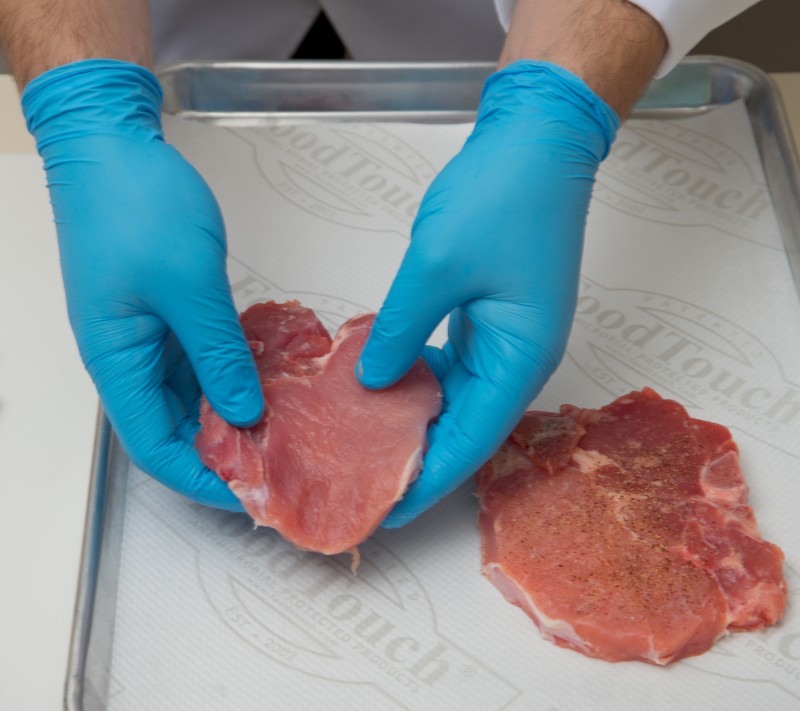Are Grades for Foodservice Inspections a Good Idea?
I generally try to stay away from controversial topics in my blog, but this is one I thought it might be interesting to discuss. Occasionally on my travels, I will come across a state or a local jurisdiction that requires foodservice inspection scores be posted in the window of the establishment. The idea is to allow would-be customers the ability to see how the foodservice operation in which they are about to eat scored on their latest health inspection.
These programs can take many forms, from a letter grade, a percentage score, or even a color-coded card (for example, green, yellow, or red). The are several reasons these programs are implemented.
First, it allows potential customers to peek into the kitchen of these businesses to get a sense of what their food safety practices are. Unlike me, many people don’t want to go peek into the kitchen of our favorite restaurants and many wouldn’t really know what to look for, either. I remember many years ago my mother took a tour of a local restaurant with her 4-H Club and came home talking about how dirty their floors were. I was only in high school at the time and cooking at a local restaurant and I remember telling her that the floors can be cleaned at the end of the shift, were the countertops clean and sanitary? Was there evidence that people were washing their hands? She didn’t really know the answer to those questions, but she was adamant that their floors were filthy.
Second, it provides an incentive for restaurants to improve. The old scarlet letter approach to foodservice. And there is some evidence in the research that shows that implementing this type of system does lead to better health inspections scores and less outbreaks, including one study that shows there was a decrease in foodborne disease hospitalizations in Los Angeles County following the implementation of a system that placed grade cards in the front of businesses. However, some food safety scholars have noted that perhaps it isn’t that the businesses are improving, but the inspectors being a bit apprehensive to assign a poor grade that has caused an increase in scores.
…in 40% of all outbreaks where a contributing factor was identified [from 2017-2019], at least one factor was that food was contaminated by an ill food worker.
But are these programs all they are cracked up to be? One of the biggest criticisms of these types of systems is that they are only one snapshot of what goes on in the kitchen. The inspector is there for a limited amount of time. Just because things were great when the inspector was present, does not mean that on a Friday night there isn’t a major food safety violation while the cooks are in the heat of battle.
The inspection grades also do not account for the entire supply chain. Many major recalls and several of the high-profile foodborne outbreaks that have occurred in the last few years occurred because the food was contaminated when it came into the foodservice operation. Take for example, the spinach outbreak we had a few years ago. Outside of cooking it, nothing that the food service operation could have done made that spinach safe to eat. A grade on the door would do nothing in those instances to keep the customer safe.
Another significant issue with grades is their subjectivity and potential for inconsistency from inspector to inspector. While most inspectors are great at what they do, inconsistencies between inspectors can create an unfair playing field, where establishments may be penalized or rewarded based on the personal bias or interpretation of the inspector.
Grades for foodservice inspections primarily function as a punitive measure, focusing on labeling establishments. While I am not an inspector and never have been one, it seems that this goes against what inspectors typically try to do – and that is educate operators and help them improve. Instead of fostering a culture of learning and continuous improvement, the emphasis on grades often leads to a “pass or fail” mentality. This punitive approach discourages the open dialog many inspectors try to have with the operators of the foodservice businesses they inspect and promotes an environment of fear and avoidance. By shifting the focus from punishment to education and support, foodservice inspections can help businesses improve their practices and contribute to long-term food safety rather than just achieving a high grade.
As I noted before, these grades often provide a superficial snapshot of compliance at a specific point in time and in many jurisdictions, it will be a year before the business will have another inspection (unless you’re in a school foodservice, who should have two inspections per year if they are funded through the National School Lunch Program). Without a system where foodservice operators can appeal the inspection result and/or request a follow-up inspection to improve a low grade, it seems like the grade going on the front door would truly be a year long scarlet letter.
I’d love to know your thoughts about this – should foodservice operations be given a grade that should be posted for all to see? Reach out to me via email and let me know! Perhaps I’ll run an update in a future blog with arguments for or against. Risk Nothing.










